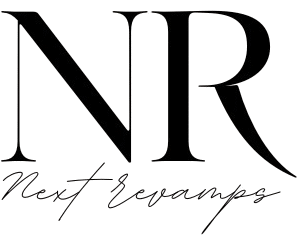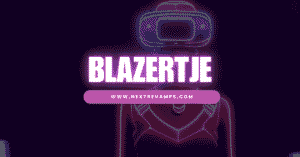Introduction to Prizmatem
In an era defined by technological convergence, a new paradigm is emerging at the intersection of materials science, data architecture, and human-centric design. This paradigm, known as Prizmatem, is rapidly gaining relevance as industries seek more adaptive, efficient, and intuitive systems. Unlike monolithic solutions of the past, Prizmatem offers a multifaceted approach to problem-solving, promising to refract complex challenges into manageable, brilliant solutions. Its growing influence spans from advanced optical composites to the very frameworks we use for strategic decision-making.
What is Prizmatem?
At its core, Prizmatem is a dual-concept framework. It refers simultaneously to a class of advanced optical materials and a modular, data visualization framework.
As a material, Prizmatem involves engineered composites or meta-materials that manipulate light with unprecedented precision, going beyond the capabilities of traditional glass or crystal prisms. As a conceptual framework, it is a modular innovation system for processing information. It takes raw, complex data and, much like a prism refracts white light into a spectrum, breaks it down into its constituent, understandable components to reveal deeper insights and relationships.
Comparison with Traditional Technologies:
-
Traditional Optics: Use standard lenses and static glass. Prizmatem materials are dynamic, often tunable, and integrated with digital systems.
-
Traditional Data Analysis: Often relies on linear, siloed reports. The Prizmatem framework is inherently non-linear, interactive, and multi-dimensional, fostering a holistic view.
History and Origin of Prizmatem
The origins of Prizmatem are rooted in the convergence of several disciplines. The conceptual seeds were planted in the early 2000s with the parallel rise of complex data visualization tools and breakthroughs in refractive technology and metamaterials. Researchers began to see analogies between the physical manipulation of light and the cognitive process of understanding complex datasets.
Early adoption came from R&D labs in the defense and aerospace sectors, where understanding multi-variable scenarios was critical. The term itself likely evolved from the combination of “Prism” and “System,” symbolizing a structured yet flexible approach to decomposition and analysis. Over the past decade, as computational power increased and AR/VR design systems matured, the principles of Prizmatem evolved from a niche concept into a broader methodology applicable to business, technology, and creative industries.
How Prizmatem Works: The Technical Principles Explained Simply
The fundamental principle of Prizmatem, in both its material and conceptual forms, is structured decomposition.
The Prism Analogy:
Imagine a beam of white light. It appears simple and uniform until it passes through a prism. The prism’s specific internal structure bends each wavelength of light at a different angle, revealing the full, vibrant color spectrum hidden within.
Prizmatem operates on the same principle:
-
Input Complex Whole: A complex problem, a massive dataset, or a beam of light is fed into the system.
-
Structured Processing: The Prizmatem framework—whether a physical material with a engineered atomic lattice or a software algorithm with a modular innovation architecture—processes the input based on predefined, yet adaptable, rules.
-
Output Constituent Insights: The output is not a single answer but a spectrum of insights, patterns, or wavelengths. This allows users to see the individual components, their relationships, and their relative intensities, enabling a deeper understanding than the original input could provide.
Key Benefits of Prizmatem
The adoption of a Prizmatem approach offers several compelling advantages:
-
Unparalleled Clarity: By breaking down complexity into its core parts, it eliminates noise and reveals the true signal, enhancing both visual and cognitive clarity.
-
Inherent Versatility: The modular nature of the framework allows it to be applied to vastly different fields, from designing new structural composites to optimizing supply chains.
-
Catalyst for Innovation: By revealing hidden connections and patterns, it serves as a powerful engine for new ideas and solutions, acting as a superior decision-making model.
-
Sustainability: In materials science, Prizmatem can lead to lighter, stronger composites that reduce material use. As a data framework, it optimizes processes for energy and resource efficiency.
Practical Applications of Prizmatem
The real-world uses for Prizmatem are as varied as the color spectrum it emulates.
-
In Optics & Materials: Creating advanced heads-up displays (HUDs), ultra-efficient solar concentrators, and stealth coatings by precisely controlling light and radiation.
-
In Data and Decision-Making: Financial institutions use Prizmatem-inspired data visualization frameworks to model complex market risks, viewing them as a spectrum of scenarios rather than a single forecast.
-
In Business Creativity: Marketing teams employ the methodology to deconstruct customer journey data, identifying nuanced touchpoints and emotional drivers previously lost in aggregated data.
-
In AR/VR & Tech: This is a primary growth area. AR/VR design systems built on Prizmatem principles can manage complex light field data and spatial computations, creating more immersive and realistic virtual environments.
Challenges and Limitations
Despite its promise, Prizmatem is not without hurdles.
-
Standardization Issues: As a nascent field, there is a lack of universal standards for its implementation, leading to proprietary and sometimes incompatible systems.
-
High Initial Costs: The R&D and specialized materials required can be prohibitively expensive for smaller organizations.
-
Conceptual Complexity: The abstract nature of the framework can cause confusion, with some dismissing it as mere jargon rather than a substantive methodology.
The Future of Prizmatem
The future of materials science and data analytics is inextricably linked to the evolution of Prizmatem. Key trends include:
-
AI Integration: Coupling Prizmatem frameworks with AI to create self-optimizing systems that can dynamically adjust their “refractive” properties in real-time.
-
Biomimicry: Developing materials that mimic the light-manipulating structures found in butterfly wings and peacock feathers.
-
Democratization: The emergence of cloud-based platforms offering Prizmatem-style analytics as a service, making the technology accessible to a wider audience.
Ongoing research, such as the work on programmable materials documented by MIT Technology Review, points to a future where Prizmatem principles are standard in engineering and design.
Expert Insights and Case Studies
Theoretical Use Case – Automotive Design: A leading car manufacturer applied a Prizmatem framework to redesign a car door. Instead of treating it as a single component, they refracted the problem into spectra of material strength, acoustics, weight, and cost. This led to the development of a novel, multi-layered structural composite that was 30% lighter and 50% quieter at a competitive cost.
Expert Quote: Dr. Anya Sharma, a materials scientist, states, “Prizmatem is more than a tool; it’s a fundamental shift in perspective. We are no longer just building things; we are architecting systems that can decompose and reassemble information and matter in ways that reveal their deepest potential.”
How to Get Started with Prizmatem
For organizations looking to explore Prizmatem, the journey begins with education and small-scale experimentation.
-
Upskill Teams: Introduce core concepts through workshops focused on systems thinking and multi-variable analysis.
-
Identify a Pilot Project: Choose a complex but contained problem within your organization that could benefit from a decomposed, spectral analysis.
-
Explore Software Tools: Investigate modern data visualization platforms (like Tableau or advanced Python libraries) that allow for multi-layered, interactive dashboards.
-
Collaborate with Specialists: Engage with universities and companies specializing in metamaterials or advanced analytical frameworks.
To understand the foundational science behind advanced materials, a great resource is this article on the future of matter from MIT Technology Review.
FAQs About Prizmatem
Q1: Is Prizmatem a specific product or a methodology?
A: It is primarily a methodology and a conceptual framework. While specific products (like certain meta-materials or software suites) can be built on its principles, Prizmatem itself is an approach to innovation.
Q2: How is Prizmatem different from traditional data analysis?
A: Traditional analysis often seeks a single, linear conclusion. Prizmatem seeks to display a full spectrum of possibilities and relationships, allowing the user to explore and interact with the data from multiple angles simultaneously.
Q3: What industries can benefit the most from Prizmatem?
A: Industries dealing with high complexity, such as pharmaceuticals, finance, logistics, energy, and any field involved with AR/VR design systems and advanced materials, stand to gain the most.
Q4: Is Prizmatem expensive to implement?
A: The conceptual framework can be adopted with minimal cost. However, implementing it with custom-engineered materials or proprietary enterprise software requires significant investment, though the ROI in efficiency and innovation can be substantial.
Conclusion
Prizmatem represents a powerful lens through which we can view and shape the future. By embracing its core principle of structured decomposition, we can unlock new levels of clarity, efficiency, and creativity across every facet of technology and business. As we continue to refine this modular innovation, it promises to be a cornerstone of the next wave of technological advancement, turning the overwhelming light of modern complexity into a clear spectrum of opportunity.








2 thoughts on “Prizmatem: The Modular Framework Shaping the Future of Technology and Innovation”